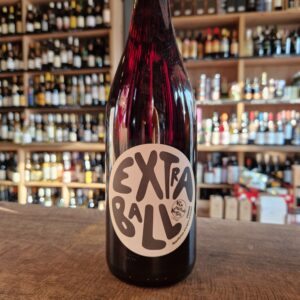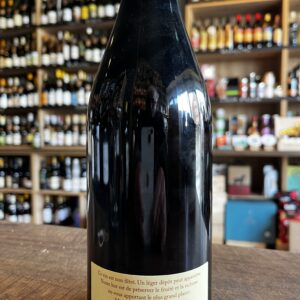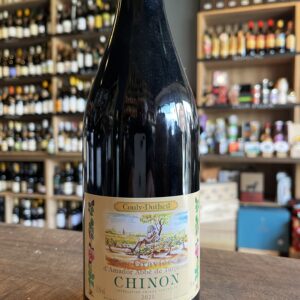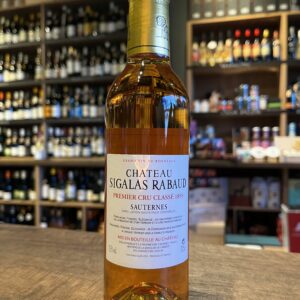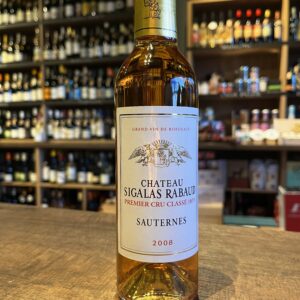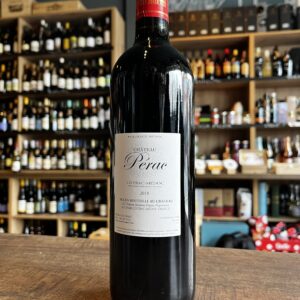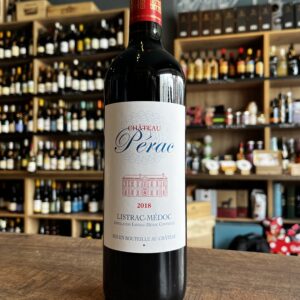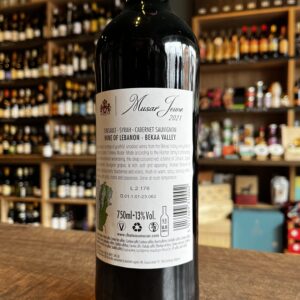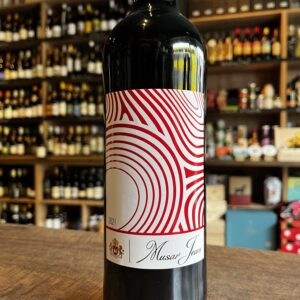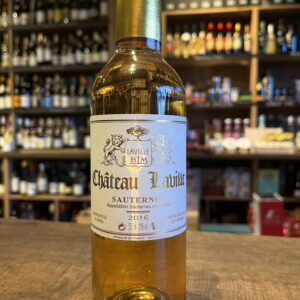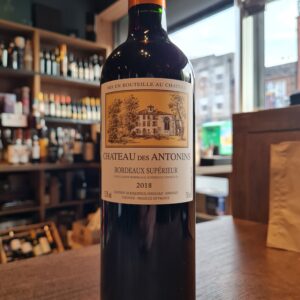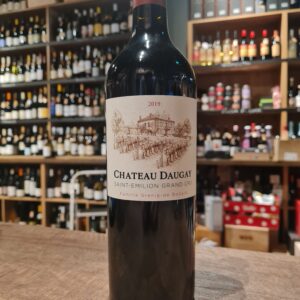-
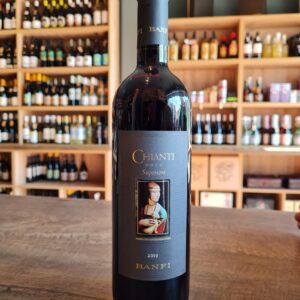 The Banfi Chianti Superiore begins with a very nice aroma of black cherry, plum, a little spice, a little earth and some nice floral notes. Tasting the wine reveals plum, oak,licorice a bit of spice, a nice dense and velvety texture plus dusty tannins = One Terrific Tuscan! Add in good acidity and balance on this medium-bodied wine and you quickly realize this wine is delivering great value for its price. The finish is very nice with good length and features some excellent slightly sour black cherry notes. Try with BBQ-marinated pork ribs, beef and vegetable skewers or T bone steaks. I am a big fan of Tuscan wines specially Banfi, would confidently recommend it.
The Banfi Chianti Superiore begins with a very nice aroma of black cherry, plum, a little spice, a little earth and some nice floral notes. Tasting the wine reveals plum, oak,licorice a bit of spice, a nice dense and velvety texture plus dusty tannins = One Terrific Tuscan! Add in good acidity and balance on this medium-bodied wine and you quickly realize this wine is delivering great value for its price. The finish is very nice with good length and features some excellent slightly sour black cherry notes. Try with BBQ-marinated pork ribs, beef and vegetable skewers or T bone steaks. I am a big fan of Tuscan wines specially Banfi, would confidently recommend it. -
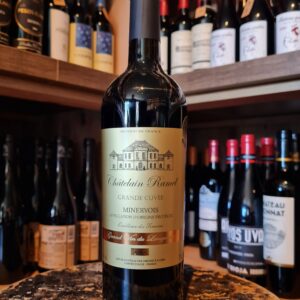 Dominated by Carignan, this is a Minervois which will wow the senses and really impress with its value for money. The fruit for the Ramel Grand Cuvee were sourced from the Domaine de la Baquiere Estate, within the heart of the Languedoc Wine Region. From 23 hectares of vineyard on the slopes of the Montagne Noire where the Ramel-Mazard family winemaking dates back to 1726, forming traditional methods of production, with the fruit harvested by hand and each grape variety vinified separately in stainless steel. This is a medium/full bodied with bright ruby edge. Interesting and attractive nose, sweet blackberry, plum notes with a smoky, meaty complexion. Cherry notes too. Medium weight palate with sweet blackberry fruit, mocha and cherry tones. Tannins are grippy but well balanced and the 14% alcohol well integrated. Would suit Duck very well, or slow cooked meats stew style dishes.
Dominated by Carignan, this is a Minervois which will wow the senses and really impress with its value for money. The fruit for the Ramel Grand Cuvee were sourced from the Domaine de la Baquiere Estate, within the heart of the Languedoc Wine Region. From 23 hectares of vineyard on the slopes of the Montagne Noire where the Ramel-Mazard family winemaking dates back to 1726, forming traditional methods of production, with the fruit harvested by hand and each grape variety vinified separately in stainless steel. This is a medium/full bodied with bright ruby edge. Interesting and attractive nose, sweet blackberry, plum notes with a smoky, meaty complexion. Cherry notes too. Medium weight palate with sweet blackberry fruit, mocha and cherry tones. Tannins are grippy but well balanced and the 14% alcohol well integrated. Would suit Duck very well, or slow cooked meats stew style dishes. -
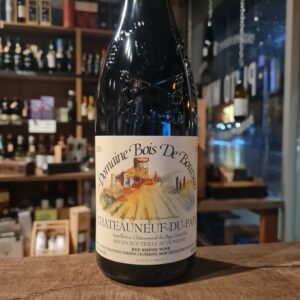 Domaine Bois de Boursan makes exemplary Châteauneuf-du-Pape in the Southern Rhône. This family-run estate was started by the Versino family in 1955, who moved across from Piedmont in Italy. It is now in the hands of Jean-Paul, the third generation at the helm. He takes great pride in continuing to make traditionally-styled reds with the belief that vinifying with stems and ageing the wine for extended periods in large oak foudres gives his wine its unique character. There is nothing flashy or opulent here, just wines with great character. In total, Jean-Paul has 10 hectares spread across 27 different parcels in Châteauneuf-du-Pape, with its changing soil types and vines up to 50 years old.
Domaine Bois de Boursan makes exemplary Châteauneuf-du-Pape in the Southern Rhône. This family-run estate was started by the Versino family in 1955, who moved across from Piedmont in Italy. It is now in the hands of Jean-Paul, the third generation at the helm. He takes great pride in continuing to make traditionally-styled reds with the belief that vinifying with stems and ageing the wine for extended periods in large oak foudres gives his wine its unique character. There is nothing flashy or opulent here, just wines with great character. In total, Jean-Paul has 10 hectares spread across 27 different parcels in Châteauneuf-du-Pape, with its changing soil types and vines up to 50 years old. -
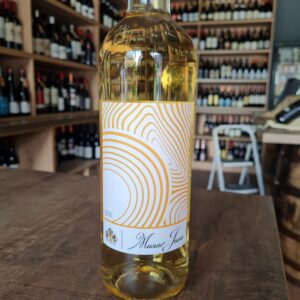 Château Musar is located in the Bekaa Valley, in Lebanon. It was created by Gaston Hochar in 1930 when he was only 20 years-old and inspired by Lebanon’s 6,000-year winemaking tradition and his travels in Bordeaux. Serge Hochar, his son, started producing wines at the end of 1950. His brother, Ronald, joined at the beginning of 1960. In 1975, 97% of the production was sold locally. It picked up after the Bristol Wine Fair of 1979 and, in 1990, at the end of the civil war, the export accounted for 97% of the production. The 3rd generation of the Hochar family started joining in 1994 and is still a family-run-business. Musar Jeune White is an unoaked blend of Viognier, Vermentino, Chardonnay from youthful Bekaa Valley vines. Crisp and aromatic, this eclectic blend of French and Italian varieties has its own distinct personality – passionfruit, apples, elderflowers – and a dry, refreshing finish. No need to decant; enjoy chilled (10-12°C) with grilled fish, herb-scented roast chicken, seafood salads and spicy oriental dishes. All their wines are Organic.
Château Musar is located in the Bekaa Valley, in Lebanon. It was created by Gaston Hochar in 1930 when he was only 20 years-old and inspired by Lebanon’s 6,000-year winemaking tradition and his travels in Bordeaux. Serge Hochar, his son, started producing wines at the end of 1950. His brother, Ronald, joined at the beginning of 1960. In 1975, 97% of the production was sold locally. It picked up after the Bristol Wine Fair of 1979 and, in 1990, at the end of the civil war, the export accounted for 97% of the production. The 3rd generation of the Hochar family started joining in 1994 and is still a family-run-business. Musar Jeune White is an unoaked blend of Viognier, Vermentino, Chardonnay from youthful Bekaa Valley vines. Crisp and aromatic, this eclectic blend of French and Italian varieties has its own distinct personality – passionfruit, apples, elderflowers – and a dry, refreshing finish. No need to decant; enjoy chilled (10-12°C) with grilled fish, herb-scented roast chicken, seafood salads and spicy oriental dishes. All their wines are Organic. -
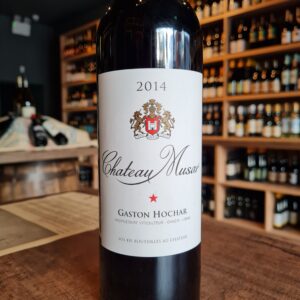 Seven years in the making, Chateau Musar Red is a blend of Cabernet Sauvignon, Carignan and Cinsault from vineyards near the Bekaa Valley villages of Aana and Kefraya on gravelly soils over limestone. Planted from the 1930s onwards, yields are low from these mature bushvines (average age: 40 years):. The varietal components are brought together two years after the harvest; the resulting blend is then placed back in cement tanks before being bottled 12 months later. After 4 years’ bottle maturation in the deep stone cellars of Chateau Musar, the finished wines are released a full seven years after the harvest. Bottled unfined and unfiltered, Chateau Musar Reds are suitable for vegans; they’re also richly-textured and likely to ‘throw a crust’. This is a common feature of most fine wines and is especially true of Musar Red vintages over a decade old. Ideally, bottles should be standing up the night before opening to allow the sediment to settle. After careful decanting (and discarding of sediment, usually in the last centimetre of the bottle) the wine should be allowed to breathe for an hour and served at 18°C with roasts, grills (especially lamb), casseroles, game, and mature cheeses. One of my favourite wines and at somewhate affordable price.
Seven years in the making, Chateau Musar Red is a blend of Cabernet Sauvignon, Carignan and Cinsault from vineyards near the Bekaa Valley villages of Aana and Kefraya on gravelly soils over limestone. Planted from the 1930s onwards, yields are low from these mature bushvines (average age: 40 years):. The varietal components are brought together two years after the harvest; the resulting blend is then placed back in cement tanks before being bottled 12 months later. After 4 years’ bottle maturation in the deep stone cellars of Chateau Musar, the finished wines are released a full seven years after the harvest. Bottled unfined and unfiltered, Chateau Musar Reds are suitable for vegans; they’re also richly-textured and likely to ‘throw a crust’. This is a common feature of most fine wines and is especially true of Musar Red vintages over a decade old. Ideally, bottles should be standing up the night before opening to allow the sediment to settle. After careful decanting (and discarding of sediment, usually in the last centimetre of the bottle) the wine should be allowed to breathe for an hour and served at 18°C with roasts, grills (especially lamb), casseroles, game, and mature cheeses. One of my favourite wines and at somewhate affordable price. -
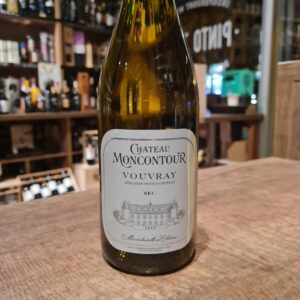 Since 1994, the Montcountour vineyards are owned and controlled by the Feray family. These wines are currently produced from six high-quality wine estates located across the Loire Valley. The vines that were grown on the steep slopes of the valley were covered with hard rocks and caves to protect the history and maintain the mystery of these impeccable vines. These terroirs are known for their exceptional climatic conditions and diverse soils. The Feudal building has survived the centuries and has seen many personalities from the court and the arts stay there, a dependency of the Bishopric of tours under Saint-Martin in the 4th century. The current building dates from the renaissance and was erected by King Charles VII who offered it to Agnès Sorel, his lady of Beauty. Partly burnt down during the French Revolution, the building was rehabilitated; then, in 1846, the Touraine writer Honoré de Balzac wanted to buy it, wanted it in vain, to live there with his fervent admirer and wife Evelyne Hanska. On June 10, 1846, he wrote to his wife and one could read in this letter the still famous formula: "Moncontour is my predilection".
Since 1994, the Montcountour vineyards are owned and controlled by the Feray family. These wines are currently produced from six high-quality wine estates located across the Loire Valley. The vines that were grown on the steep slopes of the valley were covered with hard rocks and caves to protect the history and maintain the mystery of these impeccable vines. These terroirs are known for their exceptional climatic conditions and diverse soils. The Feudal building has survived the centuries and has seen many personalities from the court and the arts stay there, a dependency of the Bishopric of tours under Saint-Martin in the 4th century. The current building dates from the renaissance and was erected by King Charles VII who offered it to Agnès Sorel, his lady of Beauty. Partly burnt down during the French Revolution, the building was rehabilitated; then, in 1846, the Touraine writer Honoré de Balzac wanted to buy it, wanted it in vain, to live there with his fervent admirer and wife Evelyne Hanska. On June 10, 1846, he wrote to his wife and one could read in this letter the still famous formula: "Moncontour is my predilection". -
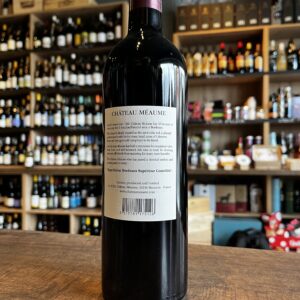
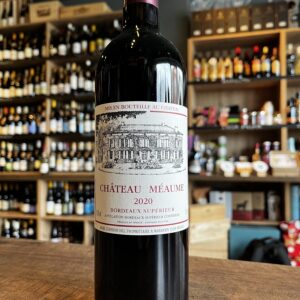 Most of us know Roald Dahl's novels, I for one have read them countless times. Firstly to my eldest and now, once in while I try with the middle one, even though he is still a bit young for those books. He is only 4 my wife says! They are just fun to read. To my surprise, after deciding to bring Château Méaume Bordeaux Supérieur to our Pinto Wines portfolio I came across that it was Roald Dahl's favourite wine and per his own words ''simply delicious''. Well I could not put it better myself. It is a fantastic wine, with superb quality at this price point and what some would call a ''Big little wine.'' Unpretentious especially being French and carries a lot with it. It has a warm, expressive black fruits with a serious, rustic, spicy structure. A hint of exotic perfume on the nose, with a luscious, very ripe blackberry and damson palate.80% merlot, with cabernets franc and sauvignon adding a rich, chewy texture. Very more-ish, with freshness, and great balance.Château Méaume, owned by English couple Alan and Sue Johnson-Hill since 1980, is an historic property just 10 miles from the famous vineyards of St-Emilion and Pomerol. The 2016 Vintage is one of the best produced after the 2000's and critics were fast to praise the 2018. Cheers Roald!
Most of us know Roald Dahl's novels, I for one have read them countless times. Firstly to my eldest and now, once in while I try with the middle one, even though he is still a bit young for those books. He is only 4 my wife says! They are just fun to read. To my surprise, after deciding to bring Château Méaume Bordeaux Supérieur to our Pinto Wines portfolio I came across that it was Roald Dahl's favourite wine and per his own words ''simply delicious''. Well I could not put it better myself. It is a fantastic wine, with superb quality at this price point and what some would call a ''Big little wine.'' Unpretentious especially being French and carries a lot with it. It has a warm, expressive black fruits with a serious, rustic, spicy structure. A hint of exotic perfume on the nose, with a luscious, very ripe blackberry and damson palate.80% merlot, with cabernets franc and sauvignon adding a rich, chewy texture. Very more-ish, with freshness, and great balance.Château Méaume, owned by English couple Alan and Sue Johnson-Hill since 1980, is an historic property just 10 miles from the famous vineyards of St-Emilion and Pomerol. The 2016 Vintage is one of the best produced after the 2000's and critics were fast to praise the 2018. Cheers Roald! -
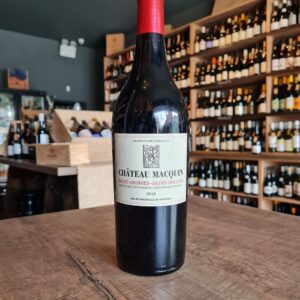 Wines have been made at Château Macquin since 1885, when the first cellar was developed by François-Albert Macquin. François was the first to re-plant vines in the Saint-Émilion region following the phylloxera outbreak in the 19th century. Today, the Château is run by his grandson Denis and wife Christine Corre-Macquin, who own 27 hectares of vines in both Saint-Émilion and Pomerol. They are involved in every vine-growing and winemaking decision to ensure the high quality of their wine remains consistent every vintage. Château Macquin is located just three kilometres north of Saint-Émilion, in the small village of Saint-Georges, the smallest of all Bordeaux appellations (180 hectares). However, at its peak of 89 metres above sea level, Saint-Georges enjoys one of the best elevations on the right bank, giving the wines freshness and concentration. The south facing vines are planted on clay and limestone soils and range from 15 to 60 years old. The vines are sustainably farmed, without the use of herbicides, fertilisers, or other harmful chemicals. The outstanding weather conditions in August and subsequent Indian summer resulted in red wine grapes with a particularly high sugar content, satisfactory levels of tartaric acid and promising aromatic potential. The thick skins and concentration of tannins required meticulous care during extraction. The Merlot wines are deep and concentrated,while maintaining freshness in spite of their relatively high alcohol level. Enjoyed with Ratatouille, Tournedos, grilled lamb chops.
Wines have been made at Château Macquin since 1885, when the first cellar was developed by François-Albert Macquin. François was the first to re-plant vines in the Saint-Émilion region following the phylloxera outbreak in the 19th century. Today, the Château is run by his grandson Denis and wife Christine Corre-Macquin, who own 27 hectares of vines in both Saint-Émilion and Pomerol. They are involved in every vine-growing and winemaking decision to ensure the high quality of their wine remains consistent every vintage. Château Macquin is located just three kilometres north of Saint-Émilion, in the small village of Saint-Georges, the smallest of all Bordeaux appellations (180 hectares). However, at its peak of 89 metres above sea level, Saint-Georges enjoys one of the best elevations on the right bank, giving the wines freshness and concentration. The south facing vines are planted on clay and limestone soils and range from 15 to 60 years old. The vines are sustainably farmed, without the use of herbicides, fertilisers, or other harmful chemicals. The outstanding weather conditions in August and subsequent Indian summer resulted in red wine grapes with a particularly high sugar content, satisfactory levels of tartaric acid and promising aromatic potential. The thick skins and concentration of tannins required meticulous care during extraction. The Merlot wines are deep and concentrated,while maintaining freshness in spite of their relatively high alcohol level. Enjoyed with Ratatouille, Tournedos, grilled lamb chops. -
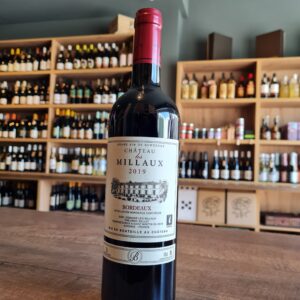 With a very good structure and fine crimson colour, this Bordeaux Supérieur is a really pleasant wine to drink.The merlot dominant variety offers extraordinary fruitiness with mellow tannins resulting in supple wines that are easy to drink. The cabernet sauvignon and cabernet franc gives a good structure to the wine. Aromas of tropical fruits and red fruits give a complex bouquet. All these features offer a wine that can be enjoyed with red meats and barbecues.
With a very good structure and fine crimson colour, this Bordeaux Supérieur is a really pleasant wine to drink.The merlot dominant variety offers extraordinary fruitiness with mellow tannins resulting in supple wines that are easy to drink. The cabernet sauvignon and cabernet franc gives a good structure to the wine. Aromas of tropical fruits and red fruits give a complex bouquet. All these features offer a wine that can be enjoyed with red meats and barbecues. -
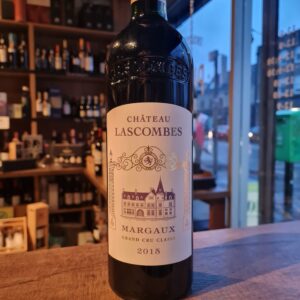 The iconic, ivy-covered Château Lascombes is one of the most recognizable structures in all of Margaux. One would never expect this picturesque and secluded estate to have one of the largest vineyards in the Médoc. The vineyard is an astounding 120 hectares primarily located in Margaux; with 10 hectares in the Haut-Médoc appellation. With a staff of 36, one can imagine the harvest period on such a vast estate would be difficult to manage. Because of their access to state-of-the-art technology and some of the most desirable plots in Margaux, the viticultural team of Château Lascombes produces wines that continue to impress and receive critical acclaim. Château Lascombes earned its namesake after its owner, Antoine Chevalier de Lascombes in 1625. The estate was inherited from the Durfort de Duras family who also owned Château Durfort – later known as the famed Second Growth property, Château Durfort-Vivens. Château Lascombes was classified as a Second Growth estate in 1855, but its history really began when it was purchased almost a hundred years later. Alexis Lichine and a group of investors – including the wealthy American, David Rockefeller – purchased the estate in 1952. There is a diverse array of soil types at Château Lascombes. Gravelly outcroppings are planted with Cabernet Sauvignon and Petit Verdot. The property also has limestone terroir, which is highly unique to the Margaux region. It is the areas with clay and limestone where the primary varietal at Château Lascombes, Merlot, really shines. Château Lascombes has 50% of its vineyard planted with Merlot – an unusual choice for an estate in Margaux. The vines are on average 35 years old, and only 50-hectares of the sprawling vineyard are considered able to produce the wines of top Second Growth quality. The estate is presently managed by Dominique Befve, who brings his expertise from ten years as technical director at Château Lafite Rothschild and Duhart Milon. Upon his arrival, Dominique oversaw major technical innovations to the cellar. The cellar astonishes visitors with its signature blue lights and technologically advanced Oxoline racks. The racks rotate the barrels and keep the lees of the wine in suspension, reducing oxidation and making the wine round and more immediately accessible. Open at least 1 hour before tasting, this Margaux finesse will be preferred at the time of entry (meat) or on your cheese board (soft and hard pasta).
The iconic, ivy-covered Château Lascombes is one of the most recognizable structures in all of Margaux. One would never expect this picturesque and secluded estate to have one of the largest vineyards in the Médoc. The vineyard is an astounding 120 hectares primarily located in Margaux; with 10 hectares in the Haut-Médoc appellation. With a staff of 36, one can imagine the harvest period on such a vast estate would be difficult to manage. Because of their access to state-of-the-art technology and some of the most desirable plots in Margaux, the viticultural team of Château Lascombes produces wines that continue to impress and receive critical acclaim. Château Lascombes earned its namesake after its owner, Antoine Chevalier de Lascombes in 1625. The estate was inherited from the Durfort de Duras family who also owned Château Durfort – later known as the famed Second Growth property, Château Durfort-Vivens. Château Lascombes was classified as a Second Growth estate in 1855, but its history really began when it was purchased almost a hundred years later. Alexis Lichine and a group of investors – including the wealthy American, David Rockefeller – purchased the estate in 1952. There is a diverse array of soil types at Château Lascombes. Gravelly outcroppings are planted with Cabernet Sauvignon and Petit Verdot. The property also has limestone terroir, which is highly unique to the Margaux region. It is the areas with clay and limestone where the primary varietal at Château Lascombes, Merlot, really shines. Château Lascombes has 50% of its vineyard planted with Merlot – an unusual choice for an estate in Margaux. The vines are on average 35 years old, and only 50-hectares of the sprawling vineyard are considered able to produce the wines of top Second Growth quality. The estate is presently managed by Dominique Befve, who brings his expertise from ten years as technical director at Château Lafite Rothschild and Duhart Milon. Upon his arrival, Dominique oversaw major technical innovations to the cellar. The cellar astonishes visitors with its signature blue lights and technologically advanced Oxoline racks. The racks rotate the barrels and keep the lees of the wine in suspension, reducing oxidation and making the wine round and more immediately accessible. Open at least 1 hour before tasting, this Margaux finesse will be preferred at the time of entry (meat) or on your cheese board (soft and hard pasta). -
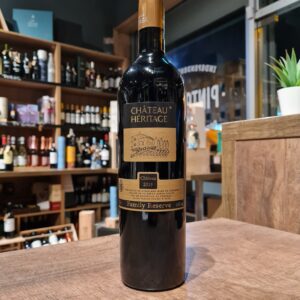 In 1888, the Touma Family established one of the first wineries and distilleries in Lebanon in the small town of Kab-elias of the Bekaa Valley (45 kilometers from Beirut) , to produce wine and Arak Touma, which is now perhaps Lebanon’s leading arak brand. Historically, the settlement goes back to the time of the Phoenicians, but the name was later changed to “Kaber Elias” (tomb of the prophet Elias), as it was believed that the prophet Elias was buried here. The Bible reports of the Prophet’s ascension to heaven in a fiery chariot at the point where John the Baptist is said to have baptized Jesus later, but the tradition of the Elijah tomb has been preserved to this day, not only among Christians, but also among the majority of the Muslim residents. During the Lebanese civil war, many Christians left Kab Elias, as they did elsewhere in Lebanon. The Touma family also had to choose to stay or leave. It was decided to stay and continue to fight and work for a presence of the Christians on the ground. In 1997, an old school building from 1932 was bought and converted into the new winery. The attempt was made to preserve the character of the original architecture in the center of Kab Elias despite all the necessary refurbishment and renovation work and alterations. Bekaa Valley is a 40-mile-long and 7-mile-wide fertile valley which is protected from rain by the Mount Lebanon mountain range to the west, and from the desert heat by the mountains on the Syrian border to the west. It lies around 1,000 metres above sea level allowing for a significant diurnal swing between the hot summer days and cool nights. The treacherous road to Beirut over the top of Mount Lebanon is frequently closed in winter due to snow. The majority of Château Héritage's vines are on the lower south-east facing slopes of Mt Lebanon, just above the winery, which ensures they're well drained with great exposure to sunlight, while being slightly cooler than the valley floor vineyards. The estate’s top wine, from their best parcels of vineyard. FOOD PAIRING: Duck, red meats, and raclette.
In 1888, the Touma Family established one of the first wineries and distilleries in Lebanon in the small town of Kab-elias of the Bekaa Valley (45 kilometers from Beirut) , to produce wine and Arak Touma, which is now perhaps Lebanon’s leading arak brand. Historically, the settlement goes back to the time of the Phoenicians, but the name was later changed to “Kaber Elias” (tomb of the prophet Elias), as it was believed that the prophet Elias was buried here. The Bible reports of the Prophet’s ascension to heaven in a fiery chariot at the point where John the Baptist is said to have baptized Jesus later, but the tradition of the Elijah tomb has been preserved to this day, not only among Christians, but also among the majority of the Muslim residents. During the Lebanese civil war, many Christians left Kab Elias, as they did elsewhere in Lebanon. The Touma family also had to choose to stay or leave. It was decided to stay and continue to fight and work for a presence of the Christians on the ground. In 1997, an old school building from 1932 was bought and converted into the new winery. The attempt was made to preserve the character of the original architecture in the center of Kab Elias despite all the necessary refurbishment and renovation work and alterations. Bekaa Valley is a 40-mile-long and 7-mile-wide fertile valley which is protected from rain by the Mount Lebanon mountain range to the west, and from the desert heat by the mountains on the Syrian border to the west. It lies around 1,000 metres above sea level allowing for a significant diurnal swing between the hot summer days and cool nights. The treacherous road to Beirut over the top of Mount Lebanon is frequently closed in winter due to snow. The majority of Château Héritage's vines are on the lower south-east facing slopes of Mt Lebanon, just above the winery, which ensures they're well drained with great exposure to sunlight, while being slightly cooler than the valley floor vineyards. The estate’s top wine, from their best parcels of vineyard. FOOD PAIRING: Duck, red meats, and raclette. -
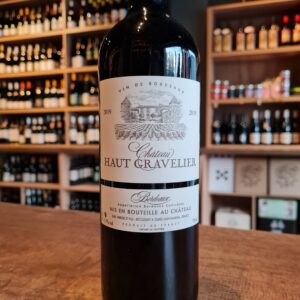 Located within the AOC Bordeaux, the Vignoble de Gravelierhas 32 Ha of vines with an average age of 20 years. It is located on hillsides thus benefiting from a beautiful sunshine. The harvest is harvested at perfect maturity and vinified using the traditional method in stainless steel vats and aged in cement vats. The grape variety of the vineyard is composed of 75% Merlot and 25% Cabernet-Sauvignon. To present a quality wine, the yields and phytosanitary treatments are moderate. The foliage is kept as high as possible to obtain better maturity. With deep colour, classic structure and unusually ripe flavours, this is classic claret to serve with roast beef, duck or T-bone steak. A gourmet Bordeaux!
Located within the AOC Bordeaux, the Vignoble de Gravelierhas 32 Ha of vines with an average age of 20 years. It is located on hillsides thus benefiting from a beautiful sunshine. The harvest is harvested at perfect maturity and vinified using the traditional method in stainless steel vats and aged in cement vats. The grape variety of the vineyard is composed of 75% Merlot and 25% Cabernet-Sauvignon. To present a quality wine, the yields and phytosanitary treatments are moderate. The foliage is kept as high as possible to obtain better maturity. With deep colour, classic structure and unusually ripe flavours, this is classic claret to serve with roast beef, duck or T-bone steak. A gourmet Bordeaux! -
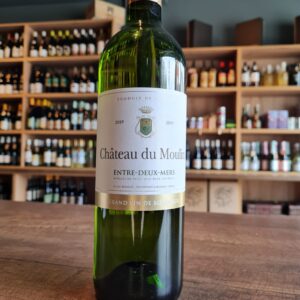 A thoroughly delightful white Bordeaux, made from a blend of Semillon, Sauvignon Blanc, and Muscadelle. Very aromatic with notes of white peach and fresh garden herbs, highlighted with bright citrus rind and mineral nuances. Easy breazy, this is lovely go-to summer wine to enjoy as an aperitif or with seafood dishes. YUM!
A thoroughly delightful white Bordeaux, made from a blend of Semillon, Sauvignon Blanc, and Muscadelle. Very aromatic with notes of white peach and fresh garden herbs, highlighted with bright citrus rind and mineral nuances. Easy breazy, this is lovely go-to summer wine to enjoy as an aperitif or with seafood dishes. YUM! -
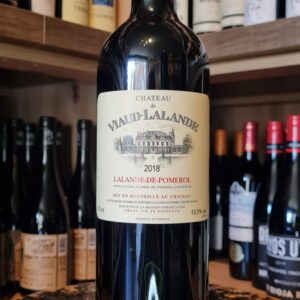 Chateau Viaud Lalande is a small-scale venture of the Durand – Teyssier family who have been making wine in the village of Puisseguin, appellation of Lalande de Pomerol, for three generations. 1.5 hectares of vineyards adjoining the Chateau were planted by Philippe Durand – Teyssier back in the 60’s. Typically for the region, those are mostly Merlot and Cabernet Franc well suited to the local, clay dominated soils. Since 2007 Philippe has handed over the wine making and day-to-day running of the property to his son Thomas. Having previously worked in prominent 1er and Grand Cru Classé estates in Saint Emilion (Château Belair, Château Cadet Bon), Thomas is continuing family tradition, with clear focus on quality. Annual production: 9000 bottles.
Chateau Viaud Lalande is a small-scale venture of the Durand – Teyssier family who have been making wine in the village of Puisseguin, appellation of Lalande de Pomerol, for three generations. 1.5 hectares of vineyards adjoining the Chateau were planted by Philippe Durand – Teyssier back in the 60’s. Typically for the region, those are mostly Merlot and Cabernet Franc well suited to the local, clay dominated soils. Since 2007 Philippe has handed over the wine making and day-to-day running of the property to his son Thomas. Having previously worked in prominent 1er and Grand Cru Classé estates in Saint Emilion (Château Belair, Château Cadet Bon), Thomas is continuing family tradition, with clear focus on quality. Annual production: 9000 bottles. -
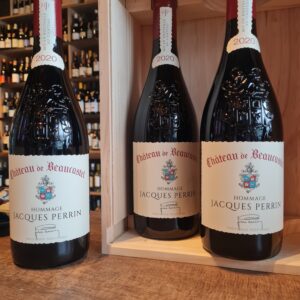 The Perrin family of Châteauneuf-du-Pape are one of the Rhône Valley’s greatest vineyard owners. With over 200 hectares of top level, prime vineyards at their fingertips, they have the terroir and skill required to produce some of the region’s finest wines. The estate traces its history back to a plot of Coudoulet vines bought by Pierre de Beaucastel in 1549. The estate was transferred into the Perrin family in 1909 through marriage, where it remains firmly to this day. Despite being one of the old guards of the region, they are also one of the most progressive estates. They were one of the first converts to organic and biodynamic faming in Châteauneuf-du-Pape, which they adopted in 1950 and 1974 respectively. A legendary Châteauneuf-du-Pape wine, Hommage à Jacques Perrin by Château de Beaucastel is one of the world's greatest wines. It brilliantly embodies the motto of the Perrin family: "A Grand Vin embodies emotion and civilisation, a legend that transcends time." The first vintage of this prestigious wine was produced in 1989. Produced in very limited quantities, the Hommage à Jacques Perrin wine comes from a unique terroir composed of rolled pebbles upon clay-limestone and silt soils in an exceptional vineyard located in the northern part of the Châteauneuf-du-Pape appellation, in the Rhône Valley. Vintage 2020 was relatively mild, the winter was punctuated by an episode of frost which had little impact on the vineyards, even the earliest plots. While the mildness of spring favoured vegetative development, a constant wind kept the soil cool. The hot, sunny summer was marked by both coolness and temperature variations between day and night, ideal conditions for ensuring a high-quality and even ripening of the grapes. Harvested at perfect maturity, the juicy and balanced grapes gave rise to a fine vintage.
The Perrin family of Châteauneuf-du-Pape are one of the Rhône Valley’s greatest vineyard owners. With over 200 hectares of top level, prime vineyards at their fingertips, they have the terroir and skill required to produce some of the region’s finest wines. The estate traces its history back to a plot of Coudoulet vines bought by Pierre de Beaucastel in 1549. The estate was transferred into the Perrin family in 1909 through marriage, where it remains firmly to this day. Despite being one of the old guards of the region, they are also one of the most progressive estates. They were one of the first converts to organic and biodynamic faming in Châteauneuf-du-Pape, which they adopted in 1950 and 1974 respectively. A legendary Châteauneuf-du-Pape wine, Hommage à Jacques Perrin by Château de Beaucastel is one of the world's greatest wines. It brilliantly embodies the motto of the Perrin family: "A Grand Vin embodies emotion and civilisation, a legend that transcends time." The first vintage of this prestigious wine was produced in 1989. Produced in very limited quantities, the Hommage à Jacques Perrin wine comes from a unique terroir composed of rolled pebbles upon clay-limestone and silt soils in an exceptional vineyard located in the northern part of the Châteauneuf-du-Pape appellation, in the Rhône Valley. Vintage 2020 was relatively mild, the winter was punctuated by an episode of frost which had little impact on the vineyards, even the earliest plots. While the mildness of spring favoured vegetative development, a constant wind kept the soil cool. The hot, sunny summer was marked by both coolness and temperature variations between day and night, ideal conditions for ensuring a high-quality and even ripening of the grapes. Harvested at perfect maturity, the juicy and balanced grapes gave rise to a fine vintage. -
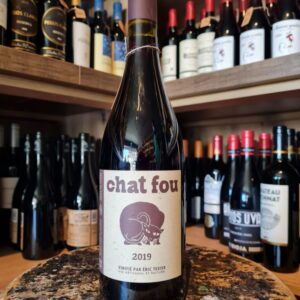 If you were ever sceptical about Organic wines, you have to give this one a try! This wine is Artisanal, Organic, Biodynamic, unfined and unfiltered. All with the aim to do as little intervention as possible and to let the Terroir speak for itself. Eric Texier Chat Fou natural red wine is a coupage of Grenache Tinta, Clairette and Marsanne, from the well known region of Côtes du Rhône.Eric Texier is a vigneron from Brézème, a municipality in the northern area of the Rhone Valley. Texier worked in nuclear engineering but switched to the world of wine in the early 1990s. He practices minimal viticulture and oenology, and attaches special importance to the management of the soils of his vineyards. The result is this superb wine a true example of natural wines and at the forefront of this movement. Eric is not a follower of fashion and speaks vehemently against those who label themselves as natural when it is used as a marketing tool rather than a true desire to understand the terroir. He believes that in most cases all natural wines taste the same! He vinifies all his wines in the same way, using as little intervention as possible to allow the terroir of his different parcels to do the talking. Hope it catches your eye!
If you were ever sceptical about Organic wines, you have to give this one a try! This wine is Artisanal, Organic, Biodynamic, unfined and unfiltered. All with the aim to do as little intervention as possible and to let the Terroir speak for itself. Eric Texier Chat Fou natural red wine is a coupage of Grenache Tinta, Clairette and Marsanne, from the well known region of Côtes du Rhône.Eric Texier is a vigneron from Brézème, a municipality in the northern area of the Rhone Valley. Texier worked in nuclear engineering but switched to the world of wine in the early 1990s. He practices minimal viticulture and oenology, and attaches special importance to the management of the soils of his vineyards. The result is this superb wine a true example of natural wines and at the forefront of this movement. Eric is not a follower of fashion and speaks vehemently against those who label themselves as natural when it is used as a marketing tool rather than a true desire to understand the terroir. He believes that in most cases all natural wines taste the same! He vinifies all his wines in the same way, using as little intervention as possible to allow the terroir of his different parcels to do the talking. Hope it catches your eye!


